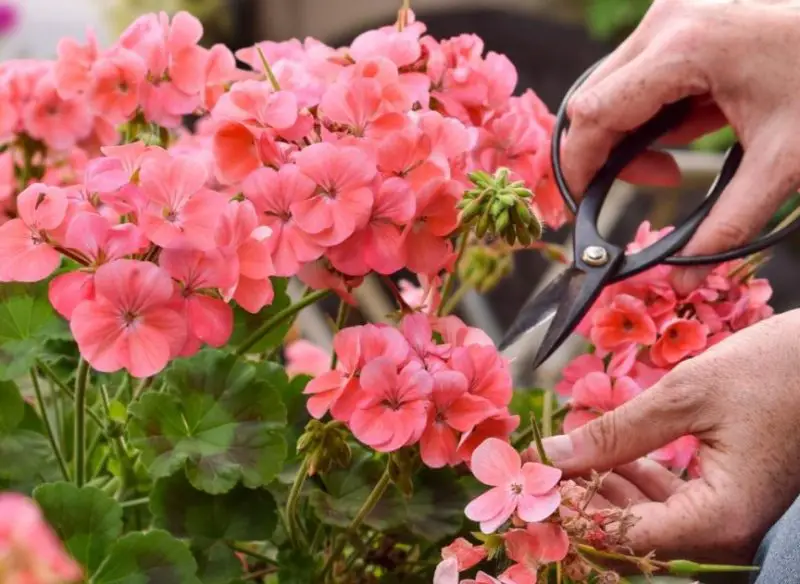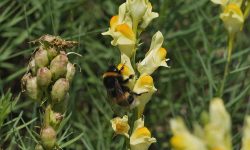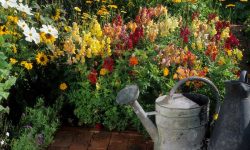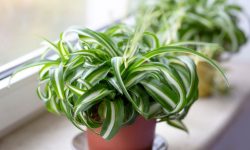Deadheading geraniums is one of the most effective ways to encourage continuous blooms and maintain the plant’s vibrant appearance. When done properly, this simple task can drastically improve the health and flowering potential of your geraniums, transforming your garden into a burst of color all season long. Whether you’re growing them in containers, hanging baskets, or garden beds, learning how to deadhead geraniums will keep your plants tidy and productive.
Understanding the process of deadheading is essential for anyone who wants to extend the blooming period of their geraniums. This technique focuses on removing old or faded flowers to redirect the plant’s energy into producing new buds. It also helps reduce the risk of disease, keeps the foliage looking fresh, and allows the plant to allocate its resources more efficiently. When you regularly deadhead, you’re not only enhancing the beauty of your plants but also promoting their long-term health.
In this comprehensive guide, you’ll discover everything you need to know about how to deadhead geraniums for bigger, better blooms throughout the growing season. From timing and technique to common mistakes and seasonal care, this article covers it all in detail.
What Is Deadheading and Why It Matters for Geraniums

Deadheading is a gardening practice that involves the removal of spent or withered flowers from a plant. For geraniums, this technique serves several important purposes. First and foremost, it encourages the plant to keep blooming by preventing it from going to seed. When flowers fade and are left on the plant, geraniums often divert energy toward seed production rather than forming new blooms.
Another key benefit of deadheading is aesthetic. Old, browning flowers can detract from the plant’s overall appearance, making it look neglected or unhealthy. By removing these flowers promptly, you improve the visual appeal of your garden or container arrangements. It’s a simple but powerful way to keep your landscape looking tidy and inviting.
Lastly, deadheading supports better air circulation and helps prevent fungal diseases. Spent blooms can trap moisture, especially in humid environments, leading to rot or mildew. Removing them helps minimize this risk and allows for better airflow among the plant’s leaves and stems. This small maintenance step can make a significant difference in your geraniums’ vigor and longevity.
Recognizing When Your Geraniums Need Deadheading
To deadhead geraniums effectively, it’s important to know what signs to look for. A flower that has reached the end of its life cycle will typically appear wilted, faded, or discolored. The petals may turn brown or fall off entirely, and the flower head may start to develop seed pods. These are clear indicators that it’s time to deadhead.
Geraniums tend to produce flowers in clusters, with multiple blooms emerging from a single stalk. Sometimes, one or two flowers in the cluster will fade before the others. In this case, you can choose to remove only the individual spent flowers, or if most of the cluster looks tired, you may cut the entire stalk back to the base.
The frequency of deadheading depends on the plant’s blooming cycle and growing conditions. During peak blooming season—typically late spring through early fall—you may find yourself deadheading every few days. Regular inspection of your plants will help you catch fading flowers early and keep the blooming cycle going strong.
The Right Way to Deadhead Geraniums for Maximum Blooms
When it comes to technique, deadheading geraniums is straightforward, but doing it properly ensures the best results. Begin by locating the base of the flower stalk that holds the fading bloom. Geraniums don’t just need a simple snip at the top; the entire flowering stem should be removed down to the joint where it connects with a main stem or branch.
Using clean, sharp pruning shears or your fingers, cut or pinch off the flower stem just above a set of healthy leaves or a leaf node. Avoid tearing the stem or damaging nearby growth, as this can create an entry point for pests or diseases. Discard the spent flower heads away from your plants to prevent any potential spread of disease or unwanted reseeding.
Some gardeners prefer to use their fingers for deadheading, especially when the stem is soft and easy to pinch. However, pruning shears provide a cleaner cut and are ideal for thicker or woodier stems. Always sanitize your tools before and after use to maintain plant hygiene and reduce the risk of infection.
Timing and Frequency for Continuous Blooming
Knowing when to deadhead is just as important as knowing how. The best time to deadhead is when flowers begin to wilt or fade. Don’t wait until they have fully dried out or dropped their petals, as the plant may already be shifting energy toward seed development. The sooner you remove fading blooms, the faster the plant can redirect its efforts toward producing new flowers.
Throughout the growing season, make deadheading a part of your regular gardening routine. Check your geraniums every few days, especially during hot or rainy weather when flowers tend to age more quickly. The more consistently you deadhead, the more continuously your geraniums will bloom.
It’s also helpful to deadhead in the morning or late afternoon when the sun is less intense. This reduces stress on the plant and minimizes the risk of sunburn on newly exposed stems. Moisture levels are often more favorable during these times, reducing the chance of damaging wet or brittle stems.
Seasonal Considerations for Deadheading Geraniums
Deadheading isn’t a one-size-fits-all process throughout the year. In spring and early summer, geraniums are actively growing and producing flowers at a rapid pace. During this time, frequent deadheading helps sustain the momentum and encourages dense, lush blooming.
As the summer progresses, heat and humidity may cause blooms to fade faster or foliage to become leggy. Regular deadheading during mid-summer prevents the plant from declining or entering dormancy. It also gives you the opportunity to shape the plant by removing overgrown stems along with the spent flowers.
In early fall, as temperatures cool, geraniums may slow their blooming. Continue to deadhead until flowering ceases or you prepare the plants for overwintering. For garden geraniums in colder zones, this may mean cutting them back before frost arrives. For potted geraniums brought indoors, deadheading helps maintain compact growth and prevent legginess under lower light conditions.
Common Mistakes to Avoid When Deadheading Geraniums
While deadheading is simple, a few common mistakes can hinder your results. One of the most frequent errors is only removing the flower head while leaving the stem intact. In geraniums, much of the plant’s energy is stored in the flower stalk. Leaving it attached wastes energy and slows the production of new buds.
Another mistake is damaging healthy leaves or stems during the process. Rough handling, especially when using fingers instead of shears, can cause bruising or tearing that leaves the plant vulnerable to disease. Always be gentle and precise in your cuts to avoid unnecessary damage.
Some gardeners also wait too long to deadhead, believing the plant will clean itself or thinking it’s not necessary. However, geraniums benefit greatly from timely intervention. Neglecting to deadhead can result in leggy, sparse growth and a noticeable decline in flowering. Establishing a routine and being attentive to your plant’s needs makes a measurable difference.
Encouraging Even More Blooms Through Pruning and Fertilization
In addition to deadheading, a combination of light pruning and proper feeding helps maximize your geraniums’ blooming potential. After removing faded flowers, assess the plant’s shape and growth pattern. If it appears leggy or uneven, light trimming of excessive stems can encourage branching and more flower production.
Feeding your geraniums regularly with a balanced, water-soluble fertilizer provides the nutrients needed for vigorous flowering. Phosphorus-rich formulas are especially effective in stimulating bloom development. Apply fertilizer every few weeks during the growing season and adjust based on your plant’s response and environmental conditions.
Watering also plays a key role. While geraniums are relatively drought-tolerant, consistent moisture supports healthier growth and more prolific blooming. Be sure not to overwater, as soggy soil can lead to root rot. Allow the top inch of soil to dry out before watering again, and always ensure proper drainage.
The Role of Light and Temperature in Bloom Production
Even the best deadheading practices won’t yield abundant blooms if your geraniums aren’t getting the light and warmth they need. These sun-loving plants thrive in full sunlight, ideally receiving at least six hours of direct light per day. Insufficient light leads to fewer flowers, leggy stems, and dull foliage.
If you’re growing geraniums indoors or in partially shaded spots, consider rotating the pots regularly or moving them to sunnier locations. Supplemental lighting can also help indoor plants maintain their blooming cycle, especially during winter months.
Temperature fluctuations can impact bloom production as well. Geraniums prefer daytime temperatures between 65–75°F (18–24°C) and cooler nights. Excessive heat may cause stress and lead to flower drop, while cold snaps can stunt growth. Providing shade during the hottest parts of the day and bringing containers indoors before frost can preserve the plant’s flowering ability.
Caring for Geraniums After Deadheading
After you’ve deadheaded your geraniums, it’s important to follow up with proper care to support recovery and new growth. Gently water the plant to help it adjust to the removal of old blooms. Monitor the leaves for signs of stress, such as wilting or yellowing, which may indicate overwatering or nutrient deficiencies.
Inspect the plant regularly for pests like aphids or spider mites that may be attracted to open wounds or tender growth. If you notice any issues, treat promptly with insecticidal soap or neem oil to prevent an infestation. Keeping your plant healthy overall will allow it to rebound quickly and continue producing flowers.
Deadheading also provides a great opportunity to check the soil condition, pot drainage, and root health. If the plant appears root-bound or the soil is compacted, consider repotting with fresh, well-draining potting mix. Geraniums respond well to occasional rejuvenation, especially when combined with regular maintenance.
FAQ About How to Deadhead Geraniums
What does deadheading geraniums mean?
Deadheading geraniums means removing spent or faded flowers to encourage the plant to produce more blooms.
How often should I deadhead my geraniums?
You should deadhead geraniums every few days during the blooming season to keep the flowers coming consistently.
What is the best tool for deadheading geraniums?
Sharp pruning shears or simply pinching off spent flowers with your fingers are effective tools for deadheading geraniums.
Can deadheading improve the health of my geraniums?
Yes, deadheading helps redirect the plant’s energy from seed production to new bloom growth, promoting healthier plants.
When is the best time of day to deadhead geraniums?
Early morning or late afternoon is ideal to deadhead geraniums, as cooler temperatures reduce plant stress.
Final Thoughts on How to Deadhead Geraniums
Mastering how to deadhead geraniums is a key gardening skill that rewards you with stronger plants and more spectacular blooms. This simple but effective practice removes spent flowers, encourages ongoing blooming, and keeps your plants looking fresh all season long. By making deadheading part of your routine and pairing it with good cultural care, you’ll enjoy a garden filled with vibrant color and thriving geraniums from spring through fall.
From choosing the right tools to understanding bloom cycles and recognizing seasonal needs, every detail matters when it comes to deadheading. With a bit of attention and care, your geraniums will flourish, producing the bright, cheerful blossoms that make them a garden favorite year after year.






